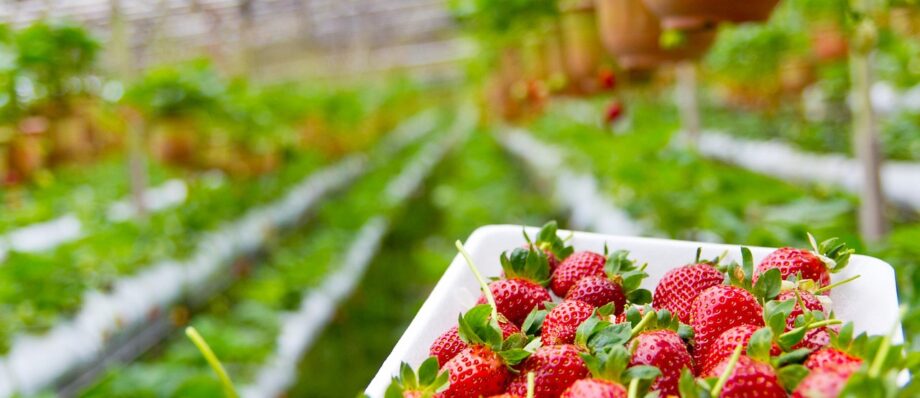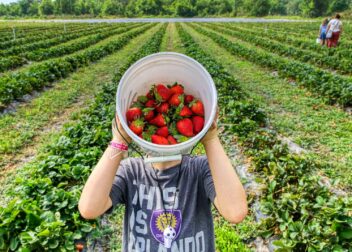Top 10 Fruits to Plant This Spring for a Bountiful Harvest
The Importance of Choosing the Right Fruits for Your Climate and Soil
The Benefits of Planting Fruits in Spring
Spring is the perfect time to sow the seeds of a fruitful future—literally! Planting fruit trees and bushes in the spring allows you to set up your homestead for a bountiful harvest later in the year. As the weather warms and the days get longer, nature is waking up, making it the ideal time to prepare your garden or orchard for the upcoming growing season. Not only do spring-planted fruits thrive, but they also bring sustainable, farm-to-table benefits to your table. Whether you’re a seasoned gardener or new to homesteading, these spring planting tips will help you get the most from your harvest.
1. Apple Trees: Varieties, Planting Tips, and Care
Apple trees are one of the most popular fruit trees to plant in spring, especially in regions with a temperate climate. Apples come in various varieties, from sweet to tart, making them a versatile fruit for many uses, such as baking, cider-making, and fresh eating. When planting apple trees, choose a variety that suits your region’s climate. Common varieties include Fuji, Gala, Granny Smith, and Honeycrisp. Plant your apple tree in well-drained soil, in a sunny spot, and ensure proper spacing for growth. Be sure to water them regularly, and don’t forget to prune them each year to maintain healthy growth and prevent diseases.
2. Berry Bushes: Strawberries, Blueberries, and Raspberries
Berry bushes are another fantastic option for spring planting. Strawberries, blueberries, and raspberries are hardy, easy to grow, and offer a quick return on investment. Strawberries are ideal for container gardening or as ground cover. Blueberries require acidic soil and should be planted in well-draining areas with full sun. Raspberries thrive in a slightly cooler climate and should be spaced well apart to allow for growth. All three varieties benefit from regular watering, especially during fruiting season. If you plant a variety of berries, you’ll enjoy fresh, sweet fruits for pies, smoothies, or simply eating straight from the vine.
3. Citrus Trees: Optimal Conditions and Varieties
Citrus trees such as oranges, lemons, and limes are excellent additions to your spring orchard, especially if you’re in warmer climates. These trees need full sun, well-drained soil, and consistent watering to thrive. Popular citrus varieties include Valencia oranges, Meyer lemons, and Key limes. Make sure to plant them in areas that are protected from strong winds and frost. Citrus trees often need a bit more care, such as regular fertilizing with citrus-specific fertilizer, but they will reward you with a plentiful supply of fresh, tangy fruit. If you live in a cooler climate, consider planting dwarf citrus trees in pots, which can be moved indoors during the colder months.
4. Stone Fruits: Peaches, Plums, and Cherries
Stone fruits, such as peaches, plums, and cherries, are favorites for many gardeners due to their juicy, sweet fruits. These fruits require full sun, and they need regular watering, especially during their flowering and fruiting stages. Peaches and plums thrive in slightly acidic soil, while cherries prefer a neutral pH. Be mindful of pest management, as these fruits are prone to issues like aphids and fruit flies. Pruning is essential for keeping the tree healthy and encouraging more fruit production. With proper care, stone fruit trees can produce abundant harvests, often within a few years of planting.
5. Grapevines: Planting and Maintenance Advice
Grapevines are a great choice for spring planting, especially if you’re interested in producing your own wine or simply enjoy fresh grapes. Grapes need a warm, sunny spot and well-draining soil to thrive. The most popular grape varieties include Concord, Cabernet Sauvignon, and Thompson Seedless. Grapevines need proper support, so consider installing a trellis or vine support system early on. Regular pruning will ensure healthy growth and improved fruit yield. Grapevines are relatively low-maintenance but do require careful attention to prevent diseases such as powdery mildew. With patience, grapevines can produce fruit in 2-3 years.
6. Figs and Pomegranates: Suitable Climates and Care
Figs and pomegranates are well-suited for warmer regions with long growing seasons. Figs thrive in Mediterranean climates, where they are well-adapted to the heat and drought. Varieties like Black Mission and Kadota figs are excellent choices for home orchards. Pomegranates, on the other hand, prefer a hot, dry climate and are fairly drought-tolerant once established. Both fruit trees need full sun and well-drained soil. Water them regularly during the growing season, and consider planting them in a sheltered spot to protect them from strong winds. These fruits are perfect for making homemade jams or enjoying fresh from the tree.
7. Kiwi Vines: Growing Requirements and Tips
Kiwi vines are a unique and delicious addition to any spring garden. They require a bit more space and care compared to other fruit trees, as kiwi vines are vigorous growers that need a sturdy trellis or support system. Kiwi vines thrive in warm climates with plenty of sunlight and moderate rainfall. Varieties such as the Arctic Kiwi or Hardy Kiwi are well-suited for colder climates. These vines need regular pruning to maintain airflow and prevent diseases, but they reward you with delicious, nutrient-packed fruit. While kiwis can take a few years to start producing, the wait is worth it for the sweet harvest.
8. Mulberry Trees: Benefits and Cultivation
Mulberry trees are another lesser-known fruit tree that thrives in spring planting. These trees can grow quite large and provide a great amount of shade while also producing tasty, blackberry-like fruit. Mulberries are not as common in many orchards, making them a great way to diversify your fruit harvest. These trees are relatively low-maintenance and can tolerate a variety of soil conditions. They are also drought-tolerant once established. Mulberries can be eaten fresh, used in jams, or dried for later use. Be mindful, however, that mulberry trees can produce messy fruit that may stain walkways and driveways.
9. Pear Trees: Varieties and Planting Tips
Pear trees are another spring favorite, offering both beauty and bounty. While they require a similar growing environment as apple trees, pear trees have some distinct needs. They prefer well-drained soil, full sun, and a cool to temperate climate. Varieties like Bartlett, Anjou, and Bosc pears are great choices, and like apples, they benefit from cross-pollination. Regular pruning is necessary to maintain healthy growth and improve fruit production. Pears are wonderful for fresh eating, baking, and even canning. Their long shelf life also makes them ideal for preserving your harvest.
10. Plum Trees: Growing and Care Tips
Plum trees are perfect for adding diversity to your spring orchard. These trees do well in a variety of climates but especially thrive in areas with moderate rainfall and well-drained, slightly acidic soil. Popular varieties include European plums, such as Stanley and Italian Prune, and Japanese plums, like Santa Rosa. Plums require consistent watering during the growing season, as well as regular pruning to maintain their shape and health. These trees also benefit from proper pest control, as plums are prone to issues like aphid infestations. A bountiful plum harvest can lead to delicious homemade jams, jellies, and even plum wine.
Diversify Your Orchard for a Thriving Harvest
As you plan your spring planting, consider adding a variety of fruit trees and bushes to your homestead. Each fruit offers its unique benefits, from sweet berries to refreshing citrus and luscious stone fruits. By diversifying your orchard, you ensure a steady, year-round supply of fresh, nutritious fruits while also contributing to sustainable agriculture practices. Whether you’re planting for yourself or to share with others, spring is the best time to begin growing your future harvest. Happy planting, and here’s to a bountiful season ahead!



